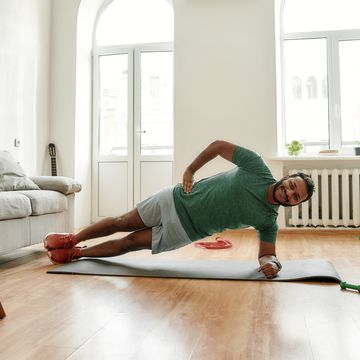With two Olympic performances and a Commonwealth Games bronze medal under her belt, long-distance runner and coach Liz Yelling is more than well-placed to answer your kors running questions. Read on to get her advice on everything from hydration to the elusive negative split marathon.
I'm a 20 stone single mum with a running buggy and a lazy dog. I get up in the morning determined to get out there again, but then life happens. Can you give me some advice on fitting in a run when a million things are getting in the way? - Tina Lynn Tolmon-Young
I understand that totally! With three kids of my own, a school run to do and all the demands of being a busy mum it's easy to lose that window of opportunity to run. What works for me is to plan my day mindy my run to do other things. For example, I’ll run with my running buggy to the supermarket, pick up the bits I need and run home. Sometimes I miss it and it’s it’s important to not beat myself up over that. Other things do get in the way and life does have pinch points. I also like the chance to be spontaneous - when sometimes I don’t see the chance to run, one might appear and I can grab my shoes and go.
How can you train yourself to be able to do a negative split marathon? It seems impossible! - Francesca Menato
It’s certainly not impossible - but tricky to get right. A great negative split marathon might only see the second half run inside a minute faster than the first. The key here is really effective pacing and enough endurance work to feel strong and on track throughout the entire race. Training for this should be endurance, strength and pace-focused. My preferred options are extended runs at target marathon pace, long threshold intervals and fast finish long runs where you simulate the demands of running the second half faster than the first. Consistent training and great pacing matters.
When your body is trying to convince you to stop, how do you win the mental battle? Any thought or mantra in particular to push you on? - Ian Patterson
Lots of things help me. I like something personal with meaning. I’ll often think about people who inspire me. I also think about my own personal goal and how important it is to and how much hard work I’ve done to get there. I remember that those tough moments do pass when you dial into your strong mind. I use positive self talk as well, often repeating the same thing!
How soon can I get back into running after having baby number three? – Jennifer Colley
That depends on lots of things, I guess. Let’s assume you and baby are healthy and you’re ready to get going again. From my personal experience, I’d say you know when you are ready and motivated. You’ll start to long to go out for a run or get in shape again. When this clicks back in take it slowly and progressively. I started off walking (for about 6 to 8 weeks roughly 10 to 12 weeks after my children were born). For me, in the first few months, the focus was them and their needs. Once they got a bit older (6 months) and I could use the buggy, I started running pushing them.
I've been plagued with injuries for about 3 years on and off. What's your number 1 tip for avoiding injury? - Shara Hates
I’m not sure I have just one! I think that listening and responding to your body is vital. When something hurts I’m quick to get some specialist advice and rest it. I’d rather get in quick and miss a few days then push on and miss loads when the injury gets worse. I also find that it’s important to balance workload, expectation and effectiveness. Sometimes just doing a little less and building some alternative exercise in,can stop that tipping point of over-reaching and getting injured and allow you to build and get stronger.
How can I increase my stride length? My cadence is already high (190ish) so seems main way to get faster! - Sasha Birkin
Improved flexibility, power and speed drills can really help increase stride length. Flexibility helps you reach out for than longer drive. Focus on hip flexors, quads and glutes. Speed and power training almost forces you to jump out of that same old same sluggish, short striding shuffle. Encouraging good form, technique, high knee drive, powerful push through of the hips, quick, light time on the ground, effective lateral arm pumping action and relaxed torso, head and shoulders.
Cramp only happens on race day not in training. How can we avoid it or at least minimise? - Helen Brooker
You probably need to look at why you might be experiencing cramp and put things in place. Is it the different running surface? Different running speeds? Different fuelling or nutrition? Different running shoes? rylko in the race? Muscle cramp can be caused by many different things and so trying to find a pattern to why yours occurs will help you put things in place (e.g. improved hydration, slower race speeds, change of training surface) to help you reduce the risk of it grabbing you!
adidas zx 2k boost 2 0 cloud white violet tone clear pink running shoes
It’s important to be adequately hydrated prior to a marathon race. This means optimally and it’s different to ‘over’ hydrated. There can be a temptation to swill back litres in the days before and the isn’t necessary. I choose to monitor my hydration status - I know when I’m dehydrated as I’m thirsty and my urine isn’t straw colour, so I’ll drink usually water and fruit juices. Once I’m hydrated well (again, not over hydrated!) then I’ll just maintain that in the event and environment rylko up until race start.
Liz Yelling is a trainer and mentor for Team Whole Earth at the Tricker's chunky lace-up leather boots Braun shoes baldaccini 1117500 rudy zamsz.













